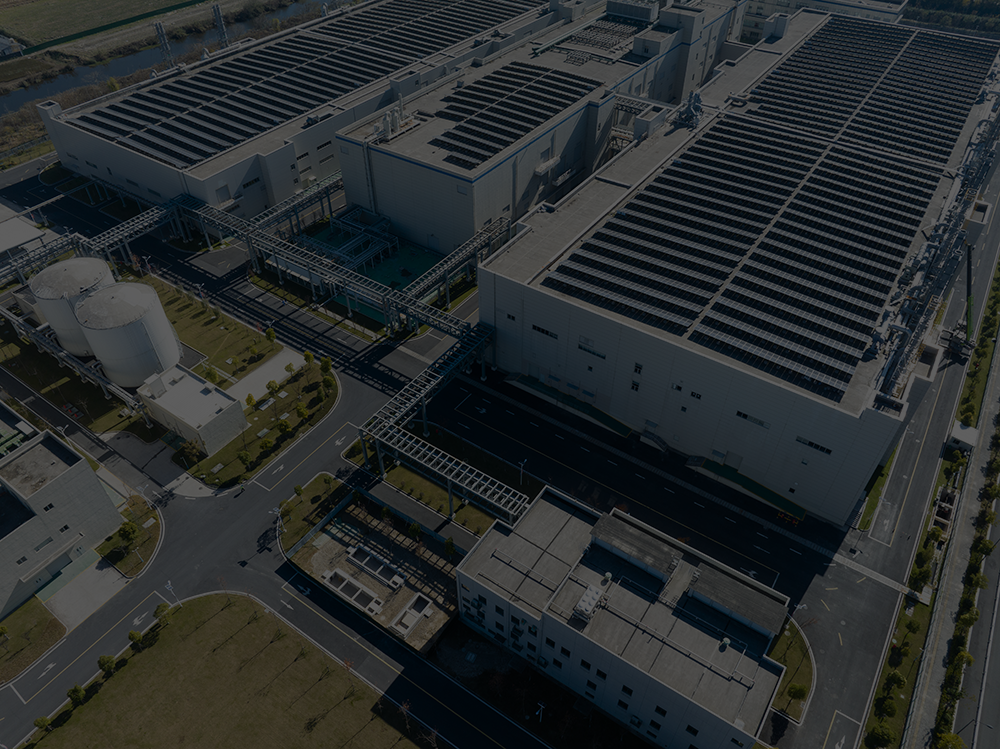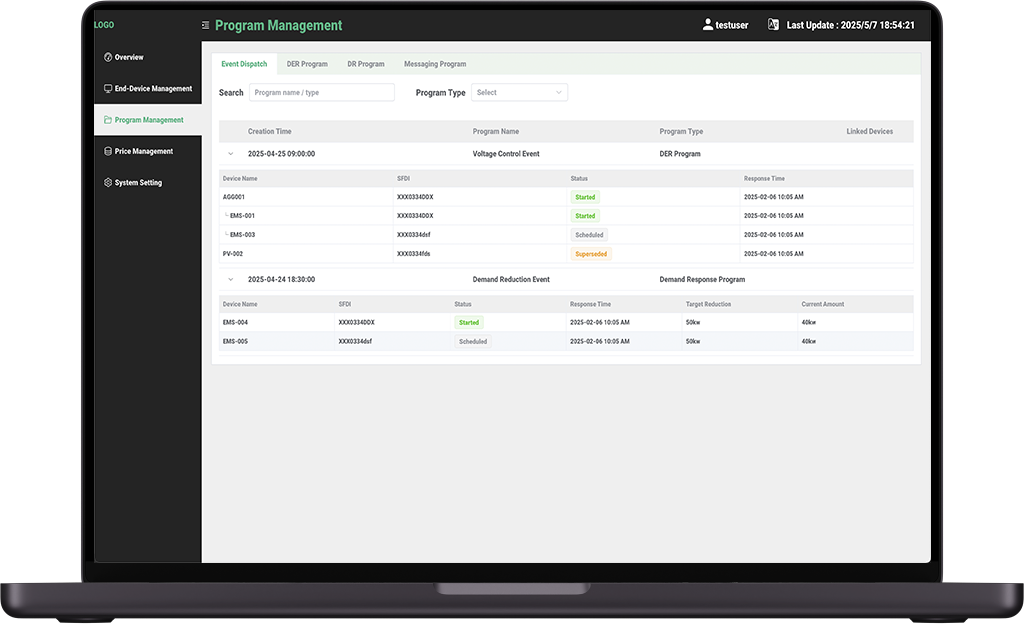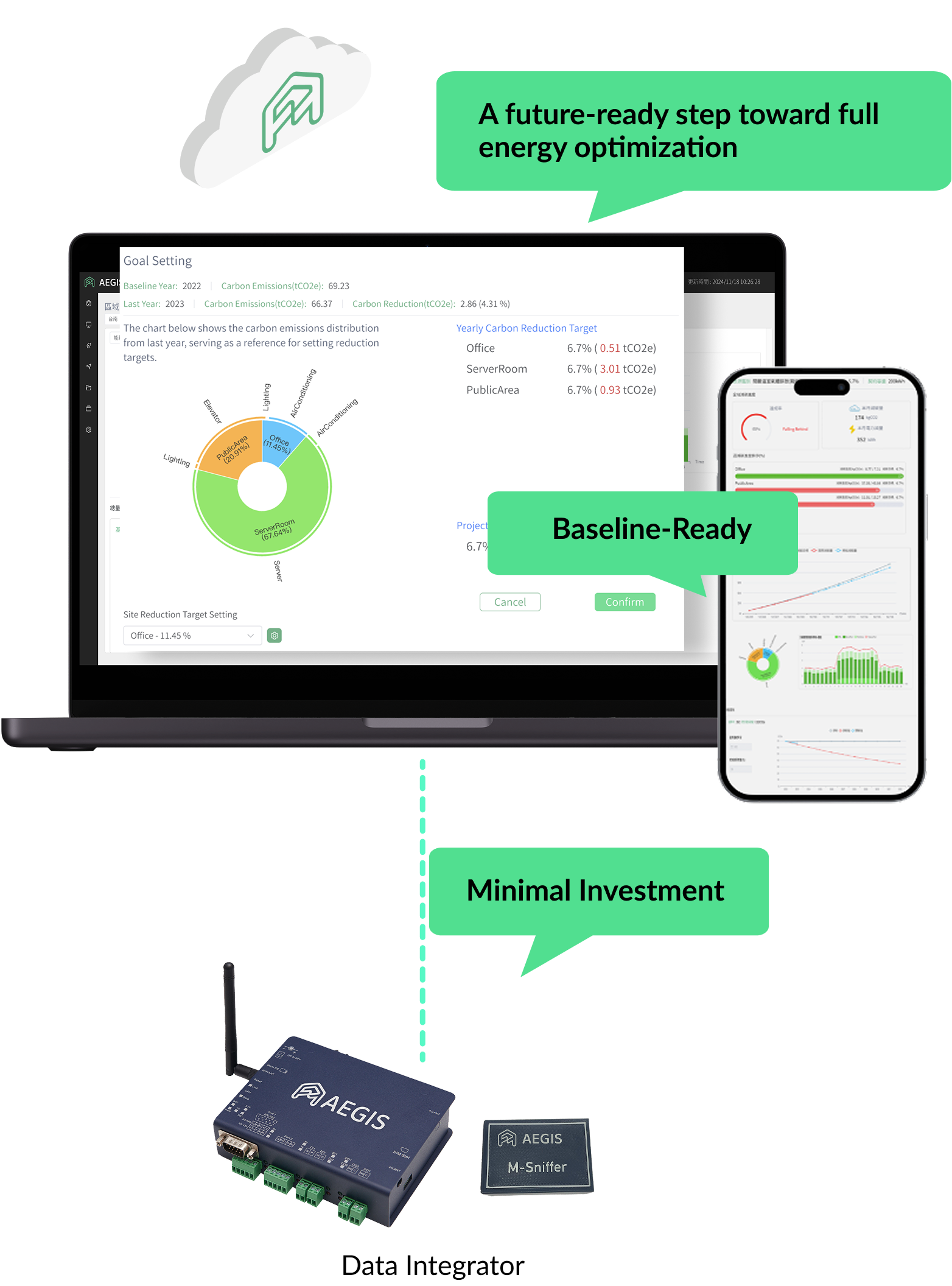

AEGIS delivers scalable energy solutions tailored to a wide range of users —from high-consumption households to forward-looking businesses preparing for energy transition, carbon compliance, and ESG goals. With the rising demand for clean energy, efficiency, and grid flexibility, the opportunity for optimization, savings, and resilience has never been greater.





Monitor energy usage and carbon emissions instantly
Instant access to energy and carbon reports, with seamless import of historical and new data.
Set, track, and evaluate your carbon reduction goals with automated progress tracking and visual reports.
AI-powered forecasting and real-time alerts help you detect risks early and take action fast.
AEGIS ECO is a smart energy solution designed to help businesses quickly and easily launch energy management and carbon tracking initiatives. With the Data Integrator, real-time energy data can be collected and seamlessly transmitted to the AEGIS cloud platform through Modbus protocol, directly connecting to on-site equipment via PLC controllers. This plug-and-play integration allows companies to begin energy optimization and carbon reduction efforts with minimal cost and minimal disruption to existing operations.
AEGIS ECO gives businesses clear visibility into their actual energy usage from day one. Through real-time data collection and visualization, it reveals energy patterns and usage insights — like a “health check” for your electricity profile — helping you identify inefficiencies, understand load behavior, and establish a reliable baseline. The system is also highly scalable, enabling future integration with energy storage, load control, demand response, and energy market participation as your strategy evolves.
AEGIS ECO is built with flexibility in mind, making it
adaptable to most on-site environments.
In many
cases, there’s no need to replace existing meters or
rewire infrastructure — energy data collection and
analysis can begin almost immediately. This enables
businesses to take their first step into smart energy
management and carbon reduction with lower cost and
greater ease.